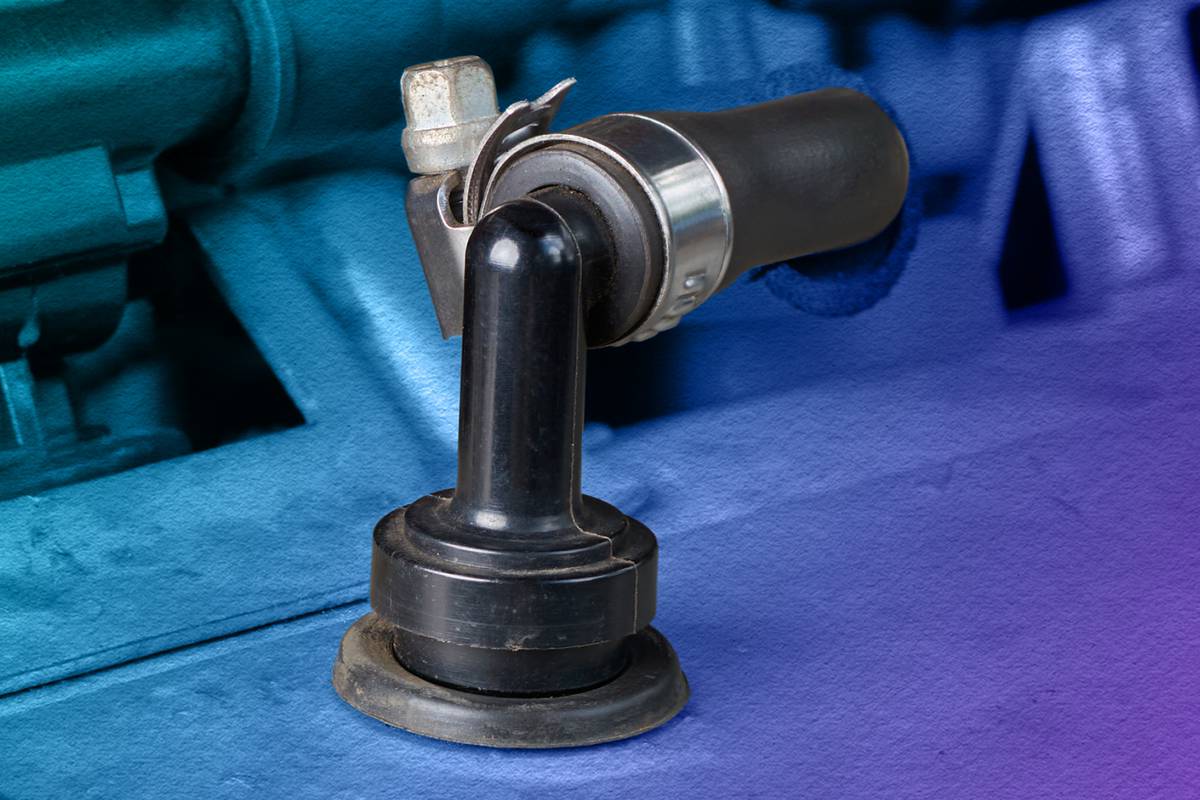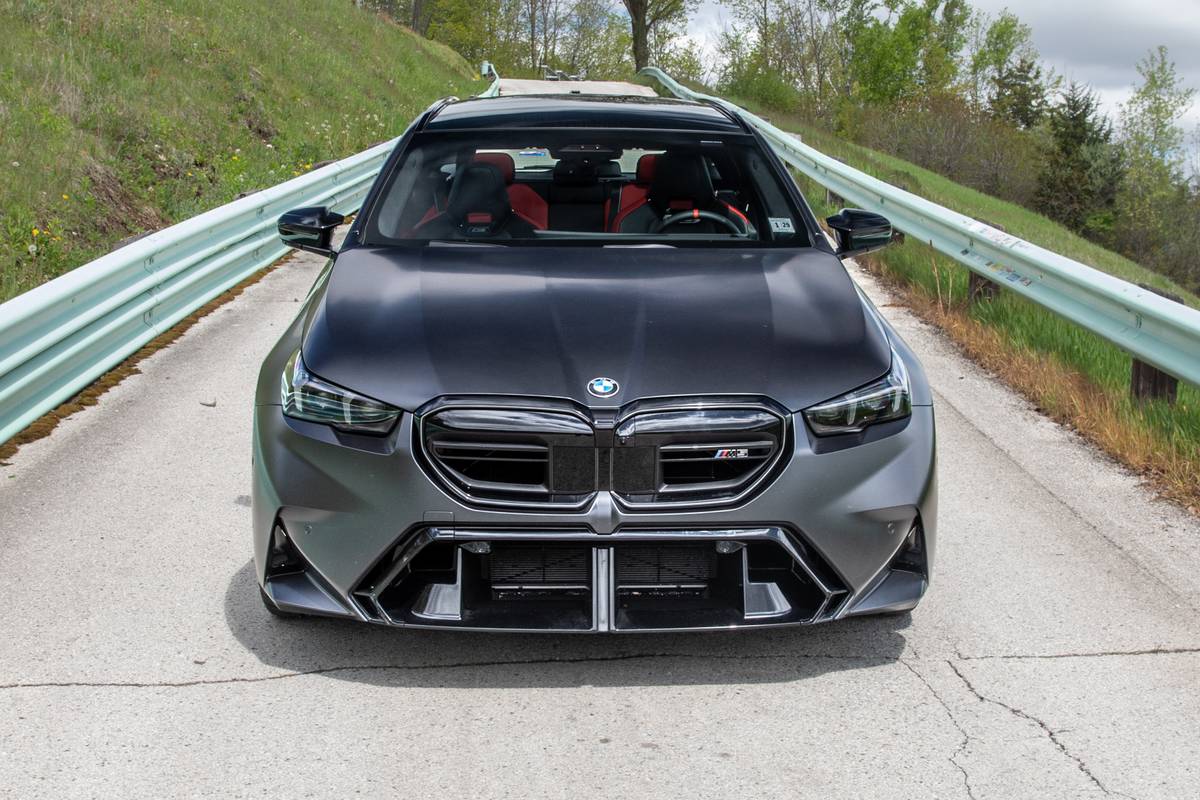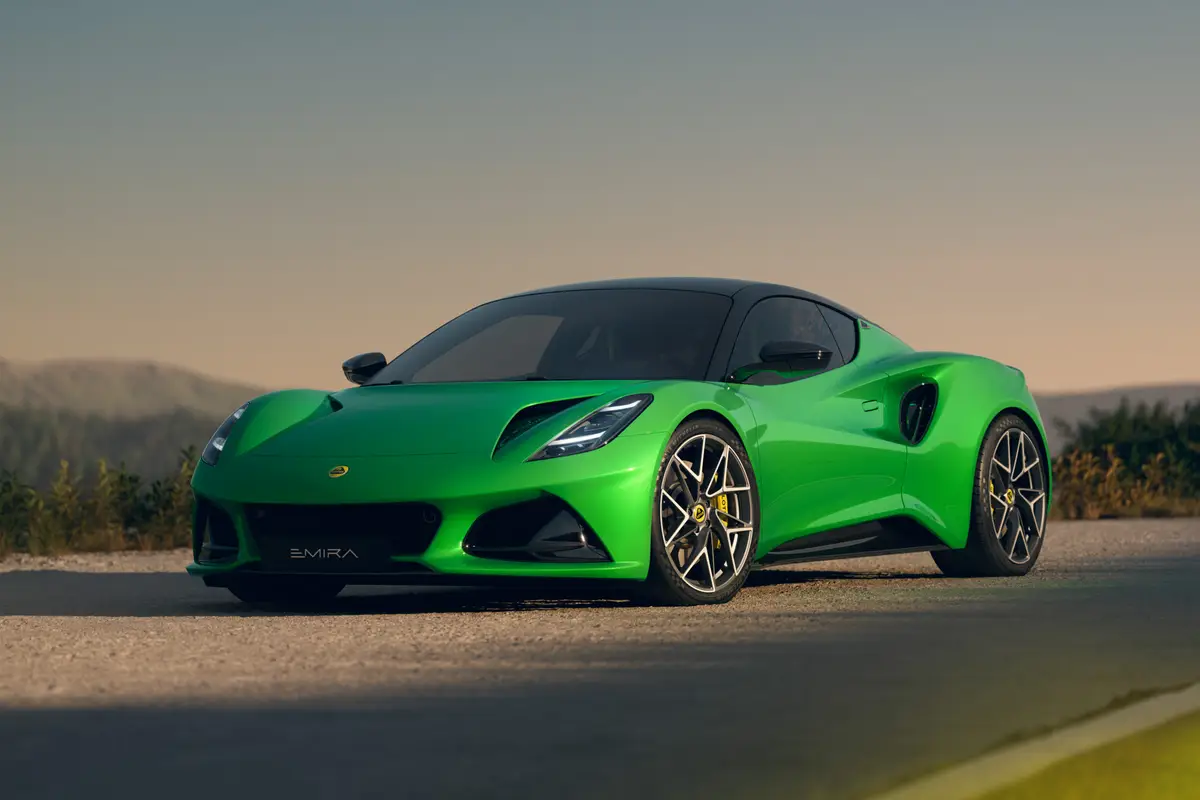Our view: 2010 Audi Q5


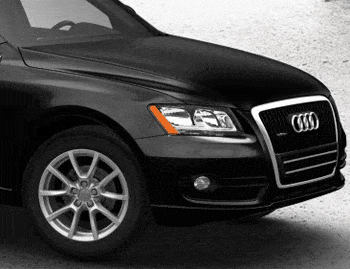
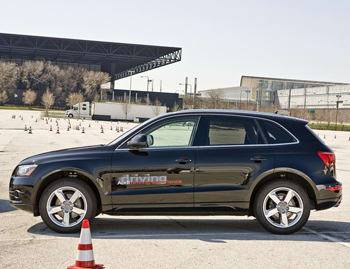
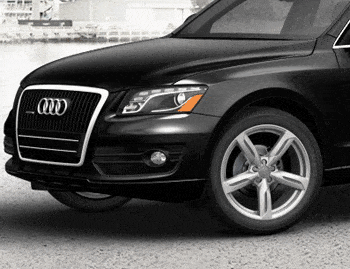

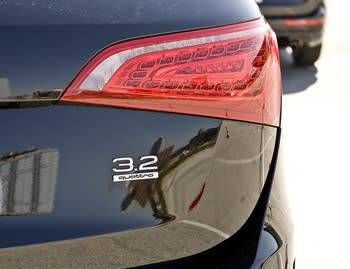
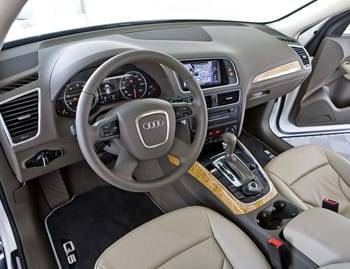
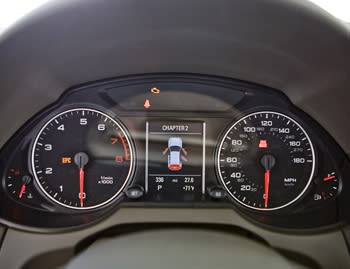
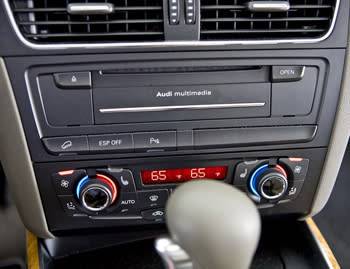
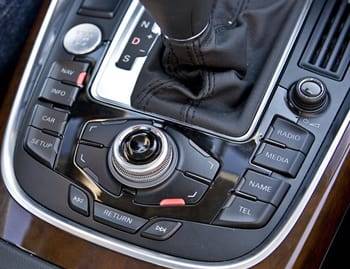
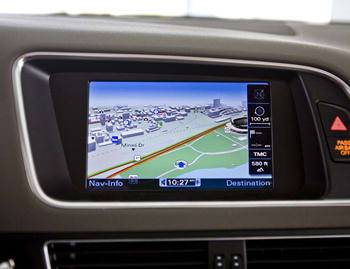
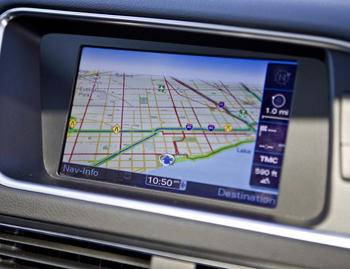
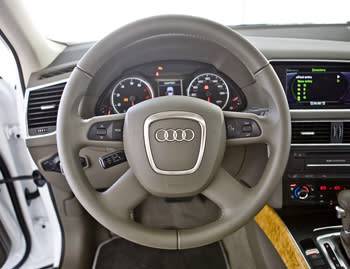



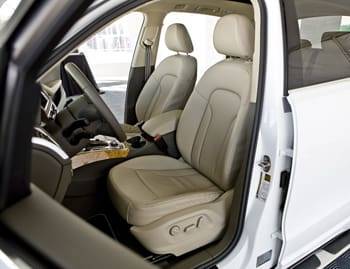
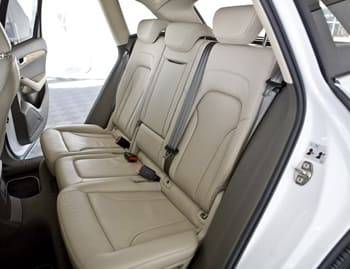
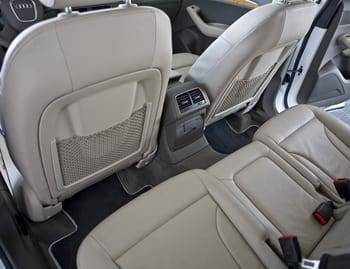
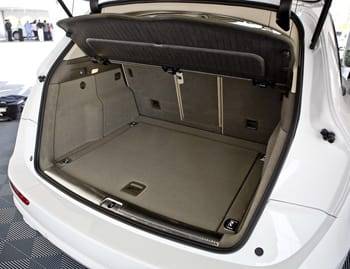
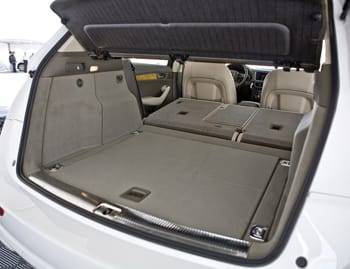

























Editor’s note: This review was written in June 2009 about the 2009 Audi Q5. Little of substance has changed with this year’s model. To see what’s new for 2010, click here, or check out a side-by-side comparison of the two model years.
Sharply styled and well-appointed on the inside, the new Audi Q5 is a controversial entry among premium small crossovers. If you’re in the market for one, it’s worth a test-drive — and my money says you won’t come away feeling neutral about it.
Audi’s ads pit the Q5 against the segment’s granddaddy, the Lexus RX. It’s an interesting tactic, because the RX has a reputation for reliable elegance. It’s the vanilla ice cream — oh, hell, the Camry — of luxury SUVs. The Q5, on the other hand, is more like a pistachio-mint flavor. Some will love it, some will hate it. I’m leaning toward the latter, but I suspect it’s because I never liked mint to begin with.
The five-seat Q5 comes in three trim levels: Premium, Premium Plus and Prestige. I drove a Premium Plus for a week. My colleague Joe Wiesenfelder logged a few hours in a range of Q5s at a press introduction earlier this year; read his review here.
Sharp Looks
Styled in the same vein as other recent Audis, the Q5 looks like a cross between the three-row Q7 and the smaller A4 wagon. (Compare them here.) It’s an attractive marriage, particularly with the Q5’s LED daytime running lights, which Audi has added — to compelling effect — on a number of models. On Premium Plus and Prestige Q5s, they sit above the bezels, sort of like eyebrows. The sinewy taillights, on the other hand, are a bit bizarre for my taste. Their resemblance to other Audi taillights is a stretch at best. Even the R8 supercar’s taillights are more conventional.
Perhaps the Q5’s most ordinary aspect is its dimensions. At 182.2 inches long and 74 inches wide, it sits squarely in the middle of its peers; middling, too, is its 38.1-foot turning circle. Eighteen-inch alloy wheels are standard on most trims; 19-inchers are also available. Twenty-inchers come with an S-Line Package, which also includes more aggressive bumpers. Check out the pictures to see it.
And It Cooks
All trims have Audi’s 3.2-liter V-6, which provides enough power to move swiftly from a stoplight or execute confident passing maneuvers on the highway. The six-speed automatic transmission upshifts smoothly and kicks down with little delay. Audi says the Q5 will accelerate from zero to 60 mph in a sprightly 6.7 seconds, a figure that suggests more everyday oomph than the 2010 RX 350 and most other competitors. In my experience, the Infiniti EX35 feels a bit quicker, but keep in mind that small luxury SUVs as a group are amply powered.
Four-wheel-disc antilock brakes are standard. The pedal is a bit grabby, not unlike the BMW X3’s. Hit the brakes hard, and there’s plenty of stopping power, but it takes practice to manage smooth stops.
Considering its power, the Q5 is also an efficient beast. Its gas mileage, at an EPA-estimated 18/23 mpg city/highway, leads all but the RX 350:
| EPA Gas Mileage (city/highway, mpg) | |||||||||||||||||||||||||||||||||||||||
|---|---|---|---|---|---|---|---|---|---|---|---|---|---|---|---|---|---|---|---|---|---|---|---|---|---|---|---|---|---|---|---|---|---|---|---|---|---|---|---|
| AWD | 2WD | Fuel usage | |||||||||||||||||||||||||||||||||||||
| 2010 Lexus RX 350 | 18/24 | 18/25 | Premium recommended | ||||||||||||||||||||||||||||||||||||
| 2009 Audi Q5 | 18/23 | n/a | Premium recommended | ||||||||||||||||||||||||||||||||||||
| 2009 BMW X3* | 17/24* | n/a | Premium required | ||||||||||||||||||||||||||||||||||||
| 2010 Cadillac SRX** | 17/23 | 18/25 | Premium recommended | ||||||||||||||||||||||||||||||||||||
| 2009 Acura RDX | 17/22 | n/a | Premium recommended | ||||||||||||||||||||||||||||||||||||
| 2009 Infiniti EX35 | 16/23 | 17/24 | Premium recommended | ||||||||||||||||||||||||||||||||||||
| 2010 Volvo XC60 | 16/22 | n/a | Premium recommended | ||||||||||||||||||||||||||||||||||||
| 2010 Mercedes-Benz GLK350 | 16/21 | 16/22 | Premium required | ||||||||||||||||||||||||||||||||||||
| 2009 Lincoln MKX | 15/22 | 17/24 | Regular | ||||||||||||||||||||||||||||||||||||
| 2009 Land Rover LR2 | 15/22 | n/a | Premium recommended | ||||||||||||||||||||||||||||||||||||
| *With automatic transmission; 16/23 mpg with manual. All others have standard automatics. **Per GM estimates using 3.0-liter V-6. Final EPA figures pending. Optional 3.6-liter V-6 estimated at 15/21 mpg; premium fuel recommended. Source: Automaker and EPA data |
|||||||||||||||||||||||||||||||||||||||
Boaters, take note: The Q5’s maximum towing capacity of 4,400 pounds leads its class. Most others max out at 3,500 pounds.
Love It or Hate It
My test car came with Audi’s optional Dynamic Steering system. You’ll love or hate it right away. Like BMW’s Active Steering, it allows for easier turning at low speeds but firmer handling at high speeds — but it goes from one to the other in sudden, halting steps. Driving up a parking garage at 10 or 15 mph, the steering went from loose to firm with little change in actual speed.
The inconsistencies seem most pronounced when the Q5’s optional Audi Drive Select system is in “Auto” mode. A $2,950 option in my test car, ADS adjusts the adaptive suspension, dials in steering characteristics and adjusts transmission performance and accelerator sensitivity. Auto mode comes between Comfort and Dynamic. The other two render a more consistent driving experience, particularly when it comes to steering, but Auto tries to mix the extremes. The result is anything but satisfying. I recommend sticking to Comfort or Dynamic — or, if you get Audi’s Multi-Media Interface, using a fourth Individual mode, which lets you configure each of the settings yourself. Alas, ADS annoyingly resets to Auto every time you restart the Q5.
Handling is otherwise fine, with minimal body roll in Dynamic mode. Comfort mode has a bit more lean, and it introduces some floaty steering response over bumpy roads. Ride-quality differences, on the other hand, are harder to discern between the two. With my tester’s 18-inch wheels, the ride wasn’t bad overall — perhaps not as well-cushioned as the softish LR2’s, but certainly better than the last X3 I tested. Wiesenfelder’s Q5, in contrast, had 19-inch wheels and no ADS. He found the setup rather firm.
Road noise is relatively low, but I noticed some overhead wind noise with my test car’s panoramic moonroof at highway speeds. The moonroof comes standard on most trims, and its mesh sunshade does zilch to help with noise abatement.
The Inside
Typical of most Audis, cabin materials are good, and consistently so. The plastics lining the dashboard match those along the doors and center console, with nary a cheap finish from knee to shoulder level. Audi appears to have done away with a recent materials gaffe, too: Recent models, including the A4 sedan and A5 coupe, place an expanse of dull-looking plastic between the navigation system and gauges. The Q5, praise be, does not.
Leather upholstery is standard. The front seats are comfortable, though the side bolsters are too minimal to hold you in on curvy roads. The standard 12-way power adjustment offers plenty of range for drivers of all sizes, as does the tilt/telescoping steering wheel. I’m not as thrilled with the other controls, though I probably hold a minority opinion on this. Audi’s window switches, turn-signal stalks, A/C dials and such have always struck me as unsubstantial, almost flimsy. Compare them with the weightier buttons strewn across Acura or Lexus dashboards, and it will be clear which gets my nod.
Legroom in back is limited, certainly less than in the Q7. It’s about as cramped back there as the GLK, another backseat-starved contender. The footwells are deep, but the cushions are too short for adult-sized thigh support, and a sizable center hump limits the space your feet have to spread out. Headroom, even with the panoramic sunroof, is fine. The seats slide forward and back and recline a few degrees, but folding them yields just 57.3 cubic feet of cargo volume, which is less than most competitors.
| Cargo Volume (cu. ft.) | |||||||||||||||||||||||||||||
|---|---|---|---|---|---|---|---|---|---|---|---|---|---|---|---|---|---|---|---|---|---|---|---|---|---|---|---|---|---|
| Behind 1st row | Behind 2nd row | ||||||||||||||||||||||||||||
| 2010 Lexus RX 350 | 80.3 | 40.0 | |||||||||||||||||||||||||||
| 2009 BMW X3 | 71.0 | 30.0 | |||||||||||||||||||||||||||
| 2009 Lincoln MKX | 68.6 | 32.3 | |||||||||||||||||||||||||||
| 2010 Volvo XC60 | 67.4 | 30.8 | |||||||||||||||||||||||||||
| 2010 Cadillac SRX | 61.2 | 29.2 | |||||||||||||||||||||||||||
| 2009 Acura RDX | 60.6 | 27.8 | |||||||||||||||||||||||||||
| 2009 Land Rover LR2 | 58.9 | 26.7 | |||||||||||||||||||||||||||
| 2009 Audi Q5 | 57.3 | 29.1 | |||||||||||||||||||||||||||
| 2010 Mercedes GLK350 | 54.7 | 23.3 | |||||||||||||||||||||||||||
| 2009 Infiniti EX35 | 47.4 | 18.6 | |||||||||||||||||||||||||||
| Source: Automaker data | |||||||||||||||||||||||||||||
Updated Multi-Media Interface
Audi’s optional Multi-Media Interface, a contemporary to BMW’s iDrive and Mercedes’ Comand systems, is in its third generation in the Q5. It’s a big improvement. The knob controller now incorporates a short joystick — really, more of an additional knob that crowns the main MMI knob — that enables easy map scrolling without having to input east/west and north/south axes, as the prior MMI required. The graphics are first-rate, and there’s a nifty bird’s-eye view that shows lots of three-dimensional buildings. Sort of like your own little SimCity. (Nerd alert? Guilty as charged.)
Improved as it is, though, MMI still leaves a lot to be desired. There are too many intermediary screens involved in accomplishing as simple a task as activating the seat heaters or viewing a map. Approach a tricky part of your route, and the map doesn’t pull up an intersection inset with specific turning points, as Lexus and several others do. Street labels are few and far between, and the labels that do appear sit on a horizontal plane with arrows pointing to their corresponding streets. Comand, iDrive and most others orient their labels on the same plane as the streets — as does a regular paper map.
Safety & Features
With excellent scores in front, side and rear crash tests, the Q5 has been named a Top Safety Pick by the Insurance Institute for Highway Safety. Standard safety features include six airbags, antilock brakes and an electronic stability system. Click here to see the full list. Torso side-impact airbags for the rear seats are optional, as is a blind spot warning system. Baby-toting parents will appreciate the well-marked Latch child-seat anchors with flip-up plastic covers in the outboard rear seats.
The Q5’s $37,200 starting price is a bit steep — of its nine major competitors, five are priced lower and one, the XC60, has the same price. At least the price includes all-wheel drive, which five competitors list as optional. Standard features include 18-inch wheels, power front seats, leather upholstery and three-zone climate control. The Premium Plus trim runs $41,500, while the Prestige runs $48,200. At the top of the pyramid, features include a panoramic moonroof, heated seats, a power tailgate, keyless access, a navigation system and a Bang & Olufsen stereo. (The Bang & Olufsen stereo, I should add, has been positively stunning in the other models I’ve heard it in.) Audi Drive Select ($2,950) and the S-Line Package ($2,950 on the Premium Plus, $2,150 on the Prestige) are stand-alone options.
Check every box, and the Q5 will run about $55,000.
Q5 in the Market
Here’s my prediction: The Audi faithful will embrace the Q5 for its unique, um, personality. Maybe even a number of other luxury-SUV shoppers might be persuaded along the way. For me, the Q5 is too much an acquired taste. So was the recently redone A4, but its wealth of user-friendly features, uncommon efficiency and relative value tipped the scales in its favor. The Q5 doesn’t have as many things going for it to get me past my test car’s variable-ratio steering. Or the brakes. Or cabin controls. It’s a crossover worth checking out, but after five minutes you’ll either want to take it home — or head straight to the cross-town Lexus dealership.
| Send Kelsey an email |

Former Assistant Managing Editor-News Kelsey Mays likes quality, reliability, safety and practicality. But he also likes a fair price.
Latest news
